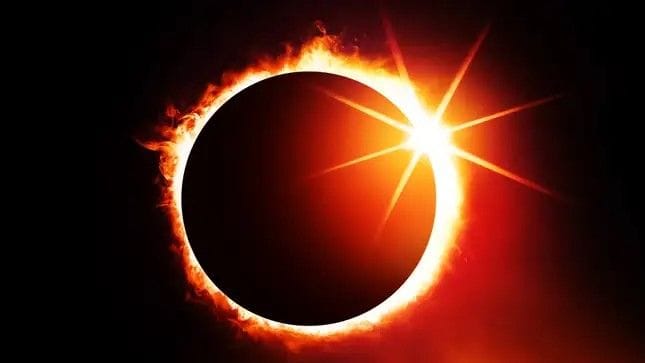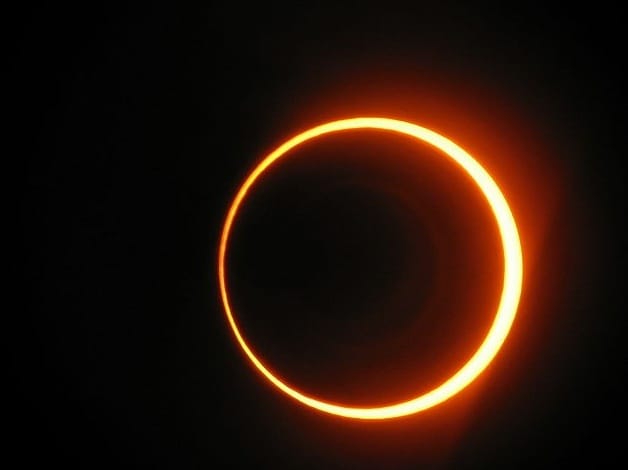The 2023 annular solar eclipse will dazzle skywatchers with a brilliant ring around the moon. This ring of fire eclipse occurs when the moon passes between the sun and Earth, appearing smaller than the sun along the annular eclipse path. As the partial eclipse begins, the shadow of the moon moves across the sun, creating stunning visuals. Using solar eclipse glasses or a handheld solar filter, you can watch a solar eclipse safely and see the ring of fire during maximum eclipse. Whether photographing the event or simply enjoying the sky, this 2023 annular promises an unforgettable celestial show.
October 14, 2023 Annular Solar Eclipse Overview
The October 14, 2023 annular solar eclipse is a spectacular event visible along the path of annularity across several regions. During this solar eclipse, the moon covers the sun’s center, leaving a thin, bright ring visible, known as the ring of fire. This annular solar eclipse allows enthusiasts to see the eclipse safely with proper eclipse glasses. Unlike a total solar eclipse, the annular eclipse occurs when the moon is at its farthest point from Earth, making it appear smaller than the sun. Therefore, the October 14 solar eclipse attracts both professional astronomers and casual viewers excited to see the eclipse in 2023.
What is an Annular Solar Eclipse?
An annular solar eclipse happens when the moon passes directly in front of the sun but does not completely cover it. The remaining sunlight creates the famous ring of fire effect. Annular eclipses occur only during a new moon phase when the moon aligns perfectly with the sun. Observers often notice that the moon appears smaller than the sun during annularity, a defining feature of this solar event. Consequently, an annular solar eclipse is a unique experience compared to total solar eclipses.
Did you know the ring of fire solar eclipse happens when the moon is farther from Earth and appears smaller than the sun?
How the Moon Casts a Shadow During the Eclipse
During an annular eclipse, the moon casts a shadow on Earth in two parts: the umbra and the antumbra. The path of annularity follows the antumbra, where observers see the ring of fire around the moon. Outside this path, viewers witness a partial eclipse with only part of the sun obscured. The moon casts a shadow that moves steadily along the path, making timing and location crucial for seeing the eclipse fully. This shadowing explains why the eclipse appears differently depending on where you are located.
Phases of an Annular Eclipse Explained
The annular solar eclipse progresses through several phases: partial eclipse begins, annularity occurs, and partial eclipse ends. First, the moon slowly moves across the sun, creating a partial eclipse. Then, at annularity, the moon covers the sun’s center, producing the ring of fire. Finally, the eclipse ends as the moon continues its orbit. Understanding these phases helps viewers plan when to see the eclipse safely and enjoy each moment.
Ring of Fire Eclipse Details

The ring of fire eclipse offers a rare and visually stunning phenomenon during an annular solar eclipse. It happens when the moon covers the sun’s center but leaves a glowing ring visible. This feature makes the October 14, 2023 solar eclipse one of the most anticipated events of the year. Observers must follow safety precautions to watch a solar eclipse safely and avoid looking directly at the sun.
Why It’s Called the Ring of Fire
The eclipse is called the ring of fire because, at peak annularity, the sun forms a bright, fiery circle around the moon. Unlike total solar eclipses, the moon does not completely cover the sun. The ring appears when the moon is at its farthest point from Earth, emphasizing the smaller-than-sun effect. This visual spectacle explains why so many enthusiasts plan to watch the solar eclipse in 2023.
Read about Black Holes and Space-Time
Differences Between Annular and Total Solar Eclipse
A total solar eclipse occurs when the moon fully covers the sun, creating darkness along the path. In contrast, an annular solar eclipse leaves a ring of fire visible around the moon. Annular eclipses typically happen when the moon is farther from Earth, making it appear smaller than the sun. Therefore, understanding these differences is essential for anyone planning to see the eclipse safely.
Observing the Ring of Fire Safely
Observing the ring of fire requires proper eye protection to prevent damage from sunlight. Eclipse glasses or solar filters allow viewers to watch the solar eclipse safely. Looking directly at the sun without protection is extremely dangerous. By following safety guidelines, you can enjoy the annular eclipse while protecting your eyes and experiencing this rare celestial event.
Solar Eclipse Timing and Visibility
Timing and location are critical for viewing the October 14, 2023 solar eclipse. The path of annularity stretches across several countries, offering unique viewing experiences. Observers outside this path will see a partial solar eclipse instead. Additionally, knowing when the solar eclipse is coming allows viewers to plan with eclipse glasses and cameras safely.
Did you know you can watch a solar eclipse safely using certified solar eclipse glasses or a handheld solar filter?
When the Solar Eclipse is Coming
The October 14, 2023 eclipse occurs during the morning and afternoon hours, depending on location. Observers along the path of annularity see the full ring of fire at peak time. Those outside the path witness a partial solar eclipse. Planning ahead ensures you can see the eclipse safely and capture its phases.
Best Locations to Watch a Solar Eclipse
Best locations to watch the eclipse include areas directly along the path of annularity. These locations offer the clearest views of the ring of fire. Even partial eclipse viewers benefit from being in regions with minimal cloud cover. Choosing the right spot enhances the solar eclipse experience in 2023.
How New Moon Triggers the Eclipse
A new moon occurs when the moon lies between Earth and the sun, essential for any solar eclipse. During this phase, the moon casts a shadow on Earth, producing either a partial, total, or annular eclipse. October 14’s eclipse is annular because the moon is at its farthest point from Earth. Understanding the new moon’s role helps explain how eclipses occur.
How to Watch a Solar Eclipse Safely

Watching a solar eclipse safely is vital for protecting your eyes from permanent damage. Using eclipse glasses or solar filters ensures safety. Following proper precautions allows observers to enjoy the annular eclipse without risk.
Tips for Safe Eclipse Viewing
Always use certified eclipse glasses when looking at the sun. Avoid using sunglasses or unfiltered cameras. Position yourself along the path of annularity for the best view. These tips make sure you can watch a solar eclipse safely in 2023.
Recommended Tools for Watching a Solar Eclipse
Telescopes with solar filters, eclipse glasses, and solar viewers are recommended tools. Cameras with solar filters allow photography without damaging eyes. Using these tools enhances safety and enjoyment during the eclipse.
Read also 2025 Total Solar Eclipse
Common Mistakes to Avoid During the Eclipse
Never look directly at the sun without protection. Avoid DIY filters that do not meet safety standards. Misjudging timing may cause you to miss the annularity. Following proper guidance prevents harm and ensures a memorable eclipse experience.
Eclipse Science and Explanation
Understanding eclipse science deepens appreciation for these celestial events. The October 14, 2023 annular solar eclipse illustrates the moon’s role in casting shadows and creating the ring of fire. Explaining eclipses scientifically shows why they vary between total and annular types.
Eclipse Explained: How It Happens
A solar eclipse happens when the moon aligns between Earth and the sun. The moon casts a shadow that creates either a partial, total, or annular eclipse. Annular eclipses occur when the moon appears smaller than the sun at its farthest point. This alignment explains why the solar eclipse is coming in specific regions in 2023.
Phases of the Annular Solar Eclipse in Detail
The annular eclipse begins with a partial phase, progresses to annularity, and ends with another partial phase. Observers see the moon covering the sun gradually, then forming the ring of fire at annularity. This progression highlights the importance of timing when watching a solar eclipse safely.
Total vs Annular Solar Eclipses
Total solar eclipses block all sunlight, creating darkness along the path. Annular solar eclipses leave a ring of fire visible. The moon’s distance from Earth determines which type occurs. Recognizing these differences helps viewers understand eclipse phenomena scientifically.
Historical and Cultural Significance
Solar eclipses have fascinated humans for centuries. They inspire cultural stories, scientific observations, and global excitement. The October 14, 2023 annular solar eclipse continues this tradition.
Past Notable Solar Eclipses
Historical solar eclipses, including total and annular events, have influenced science and society. Observers documented eclipses to study the sun and moon. Comparing past eclipses helps predict patterns for 2024 and beyond.
Did you know the 2023 annular solar eclipse will cross Texas and several U.S. states along the annular eclipse path?
Cultural Impact of Ring of Fire Eclipses
Ring of fire eclipses hold cultural significance worldwide. Many societies regard them as symbols of change or renewal. Observing these eclipses fosters appreciation for natural cycles.
Why People Love to Watch a Solar Eclipse
People love to watch a solar eclipse for its beauty and rarity. Experiencing the ring of fire or total darkness leaves a lasting impression. Scientific interest, photography, and family experiences make solar eclipses unforgettable events.
Frequently Asked Questions about Ring of Fire Eclipse
What are the most stunning photos from the 2023 ring of fire eclipse?
The most stunning photos from the 2023 ring of fire eclipse capture the brilliant ring of sunlight surrounding the moon at maximum eclipse. Photographers along the annular eclipse path used solar filters and handheld cameras to safely capture the edge of the moon creating a perfect ring of fire. Many images highlight the shadow of the moon sweeping across Earth during the partial eclipse phase, while others show the phases of an annular eclipse in sequence. Social media and astronomy sites showcased shots of the ring of fire solar eclipse from locations across Texas, Arizona, and Central America, revealing the dramatic contrast between the sun and the dark lunar silhouette.
What time will the Ring of Fire eclipse happen?
The 2023 annular solar eclipse will begin at different times depending on the location along the annular eclipse path. For example, in Texas, the partial eclipse begins around 10:10 AM local time, while maximum eclipse, when the ring of fire is visible, occurs roughly at 11:40 AM local time. Observers are advised to check the eclipse map to know the exact local time for their region. Using solar eclipse glasses or a handheld solar filter is essential to watch a solar eclipse safely during this event.
What will happen on 2 August 2027?
On 2 August 2027, a total solar eclipse will occur across parts of Africa, including Egypt, Sudan, and Western Arabia. Unlike the annular eclipse, the moon will completely cover the sun along the path of totality, producing a striking moment of darkness during the day. Observers in the path will witness the total eclipse, with the sun’s corona visible around the dark moon. This event will be one of the most spectacular total solar eclipses in recent decades, attracting astronomers, photographers, and eclipse enthusiasts worldwide. Proper eclipse glasses or solar filters will be required for safe viewing.
The ring of fire solar eclipse on October 14, 2023 is a rare spectacle you won’t want to miss. Along the annular eclipse path, the brilliant ring forms as the moon casts a shadow, and observers can safely view the annular with proper solar filters or eclipse glasses. From photography to witnessing the eclipse phases, this type of eclipse combines beauty, science, and wonder. Mark eclipse day on your calendar, check local time, and enjoy every moment of this fire eclipse before the 2024 total solar eclipse arrives.
Read about Notable Eclipses in History